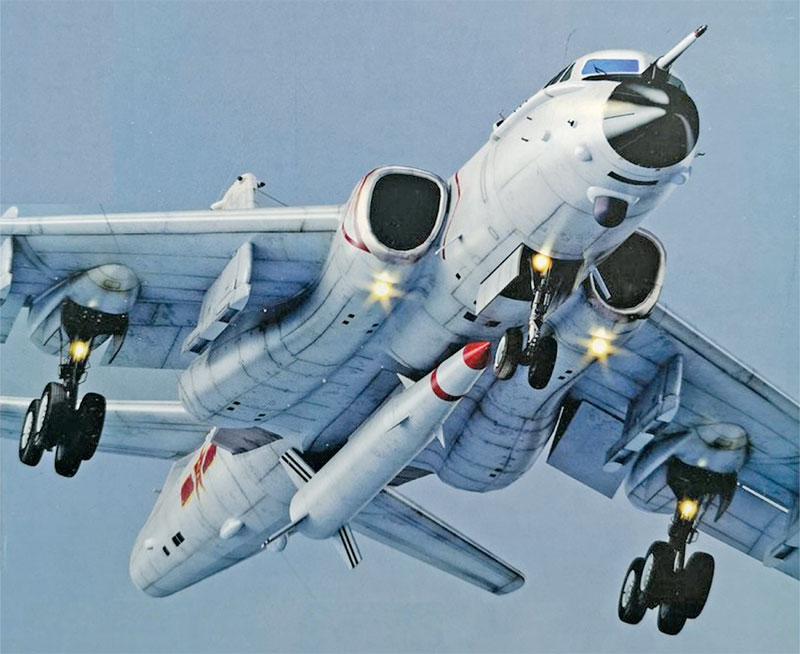Lethal and Precise
 Prof D.K. Pandey
Prof D.K. Pandey
Modern warfare necessitates aerial weapons that give them necessary capabilities beyond ground and naval forces. Attacking targets previously uncaptured because they were simply out of reach or prohibitively challenging to attack necessitated the introduction of aerial weapons. Therefore, these weapons provide a strategic edge to the fighting forces.
Aerial weapons are military armaments deployed from aircraft, including fixed-wing planes and rotary-wing helicopters. These weapons can be used for various purposes, including air superiority, ground attack, and strategic bombing, by aircraft for offensive or defensive purposes. These weapons are designed to engage targets in the air, on the ground, or at sea. They play a critical role in modern warfare, enabling air forces to achieve strategic objectives such as air superiority, precision strikes, and close air support.
Significance of Aerial Weapons
Necessity is the mother of invention. Aerial weapons resulted from the necessity to defeat the limitations of the ground and naval armies and extend power more widely. Introducing aerial weapons in air warfare brought a paradigm shift to offensive missions. This presented a new level in warfare that made warfare more ‘global’ and broader in the sky.
Aerial weapons make possible the bombing of enemy installations, strategic targets, and large concentrations of enemy troops at a given distance. This capability enables such disruption to enemy supply lines, infrastructure, and morale without direct ground engagement.
Aerial weapons equipped on fighter aircraft allow them to fight to gain control of air space by engaging in dogfighting or combat. It’s a control that will enable combatant commanders to protect friendly forces and exclude the enemy from conducting air operations. Reconnaissance and surveillance aircraft are often used to carry aerial weapons for self-defence from enemy aircraft and anti-aircraft defences as they collect intelligence.
Close air support attack aircraft armed with aerial weapons can then engage enemy positions and vehicles beyond the range of ground-based weapons. This support, cutting through enemy defences or opening the way for ground operations, can be the decisive factor.
Naval aviation depends on aerial weapons to attack enemy ships and coastal targets. This capability gives naval forces further reach out, as well as the possibility to conduct coordinated sea and air operations.
Airborne forces (troops) are employed with aerial weapons used with transport and helicopter aircraft, either for support or strategic purposes. The self-protection capability made it easy to deploy quickly to conceal surprise attacks, resulting in conclusive results.

PLAAF’s H-6N with hypersonic air-to-surface missile
Advantages of Aerial weapons
In military operations, aerial weapons provide multiple advantages. Aerial weapon systems aim to reduce the number of troops needed for a specific mission while boosting effectiveness. Given this, aerial weaponry, especially Precision Guided Munitions (PGMs), achieves precision in targeting hostile sites, thereby improving mission success while minimising collateral damage.
Air-launched ballistic missiles have more kinetic energy than ground-launched systems, and thus, they are more effective and have a higher impact in combat situations. Drones and unmanned aerial vehicles (UAVs) are safer than conventional approaches because they reduce the chance that troops will be harmed during reconnaissance and combat operations.
Operational flexibility is possible in aerial warfare as targets approach from varying heights and distances, reducing dependence on terrain and enhancing the variety of possible tactical options.
Multiple Aerial Weapons
Aerial weapons can be broadly categorised into two main types, each serving distinct roles in combat scenarios.
Air-to-air weapons: The weaponry that is meant to engage and destroy enemy aircraft while they are in flight from a plane in the air, are known as air-to-air weaponry
Air-to-ground weapons: Air-to-ground weaponry aims to strike targets on the ground or at sea from the flying position of the aircraft.
The sophistication of technology is enhancing these aerial weapons. With R&D, lethality is being improved, and at the same time, efforts are being made to introduce systems to mitigate the threats from such weapons.
Air-to-Air Weapons
Air-to-air weapons are missiles or other armaments launched from an aircraft to destroy another aircraft. These weapons are essential for achieving and maintaining
Subscribe To Force
Fuel Fearless Journalism with Your Yearly Subscription
SUBSCRIBE NOW
We don’t tell you how to do your job…
But we put the environment in which you do your job in perspective, so that when you step out you do so with the complete picture.








